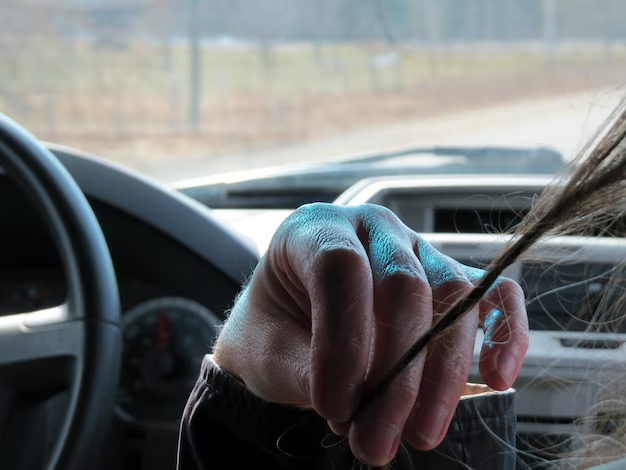When is it Safe to Get Back Behind the Wheel After Cataract Surgery?
Cataract surgery is one of the most common procedures performed today. With millions opting to regain clear vision through this innovative advancement, it's crucial to understand what activities are safe immediately following the operation, particularly driving. The question on many people's minds is: Can you drive the day after cataract surgery? Let's explore the intricacies of post-operative care and the road to recovery in our detailed guide below.
🚗 Understanding Cataract Surgery and Aftercare
What is Cataract Surgery?
Cataract surgery is a procedure designed to remove the cloudy lens from the eye, which is usually replaced with an artificial lens. This operation is generally quick, and patients are often awake, experiencing only minimal discomfort.
Post-Surgery Vision Expectations
- Immediately after surgery, you might notice blurry or distorted vision. This is normal and part of the healing process. Many patients experience rapid improvement, but full recovery can take weeks.
- Your vision often stabilizes within a day or two, but everyone's recuperation is unique.
- Colors may appear brighter as the cloudiness of the cataract is gone.
Initial Aftercare Instructions
Following surgery, it's essential to adhere to your healthcare provider's guidelines to ensure optimal healing. Here are typical recommendations:
- Rest and Avoid Strain: Just after surgery, rest your eyes and avoid straining activities, including prolonged screen use or reading.
- Avoid Water and Pollutants: Steer clear of swimming or exposing your eyes to dust and other potential irritants.
- Medications: Use prescribed eye drops to prevent infection and reduce inflammation.
- Protective Measures: Wear protective eyewear when necessary to avoid accidental rubbing or trauma.
🚦 Driving After Cataract Surgery
Can You Drive the Day After?
Driving the day after cataract surgery is generally not recommended. Though some patients feel capable sooner, transitioning back to the road requires several considerations:
- Vision Clarity: It's crucial that you have clear and stable vision in the eye that underwent surgery before driving.
- Reaction Times: Ensure that your reaction time is not impaired by lingering vision issues or medication effects.
- Depth Perception and Contrast Sensitivity: These may be initially compromised, affecting your ability to judge distances accurately.
Guidelines for Resuming Driving
Consultation with Your Surgeon: Your ophthalmologist is the best person to advise on when you can start driving again. They might assess your vision post-surgery to determine your readiness.
Vision Standards for Driving: Most regions have legal vision requirements for driving. You must meet these standards in your operated eye before hitting the road.
Daytime Driving: Once cleared, opt for short distances and daytime driving initially. Avoid driving in challenging conditions, like heavy rain or night-time, until fully confident.
Listen to Your Body: Feeling dizzy, tired, or uncomfortable is a sign to delay driving until symptoms pass.
📆 Planning Your Post-Surgery Activities
Day-to-Day Adjustments
A few simple changes can vastly impact your recovery and safe transition back into routine activities, including driving:
Transportation Arrangements: Arrange for someone to drive you home post-surgery and for any necessary errands in the first days following your operation.
Work and Daily Chores: Adjust your schedule to allow ample rest. Consider working from home temporarily or asking for assistance with household tasks.
Social Activities: Attend only low-impact social events initially. For example, choose calm settings where you can sit comfortably—away from bright or distracting environments.
Creating a Recovery Schedule
Visualizing your recovery with a schedule can be helpful:
- First Week: Focus on rest, follow-ups, and short walks. Avoid activities that involve dust or moisture.
- Week Two: Gradual return to easy tasks and light exercise. Continue following medical advice for any visual demands.
- Weeks Three and Beyond: Assess readiness for driving based on comfort and vision.
👀 Longer-term Considerations
Monitoring Ongoing Eye Health
- Stay vigilant for any changes in vision or discomfort and report them to your ophthalmologist. Regular follow-up appointments are imperative.
The Importance of Protecting Your Eyes
- Sunglasses: Wearing UV-protective sunglasses protects against bright sunlight and UV rays.
- Healthy Habits: Maintain a balanced diet and regular eye exercises as recommended by your doctor.
Managing Expectations
Patience is crucial. Adjusting to a new lens might bring subtle changes to vision; however, improvements after cataract surgery can be life-changing.
✨ Quick Summary & Practical Tips
To help guide your road to recovery, here's a handy list of important takeaways:
🌟 Key Points:
- Avoid driving immediately after surgery; allow time for recovery.
- Consult your doctor about when it's safe to resume driving.
- Follow prescribed aftercare for eye protection and healing.
- Use day-to-day adjustments and planning to ease the transition.
- Protect your eyes long-term with UV glasses and eye health habits.
🚩 Tips for a Smooth Recovery:
- Arrange transport until safe & recommended to drive.
- Limit screen time and prolonged exposure to bright lights.
- Follow any prescribed medication regimes diligently.
- Prioritize rest and protect your eyes to optimize recovery.
- Engage in activities progressively, starting with low-intensity versions.
Every journey post-cataract surgery is unique, and while regaining the ability to drive can symbolize freedom and independence, safety should always come first. Regular communication with your healthcare provider and gradual return to activities will ensure a smooth transition back to your daily routine. As you navigate the post-surgery period, keeping these insights close at hand will prove invaluable. 벛
